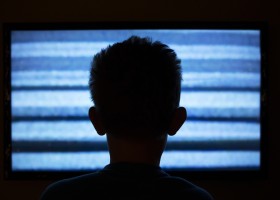Teens and Future Orientation
A common conversation between parents and teens has to do with future aspirations and desires, most of which are usually focused around the teen's desire to move rather quickly and easily into the adult world, often without a realistic view of what that would mean or what it would entail. For example, the teen who is unhappy with some of his parents' restrictions and rules might say something along the lines of "When I'm 18, I'm moving out and getting my own apartment and then I'll come in at night whenever I want. Not only that, but I can do whatever I want when I want and you won't be able to tell me what to do."
Cueing
A common experience for many of us growing up was learning how to respond to certain cues we got from our parents regarding our behavior. For me, it was the single raised eyebrow that appeared on my mother's face when I was getting dangerously close to being in trouble. That eyebrow, which sometimes barely moved, was an unmistakable message that I had better move in a different direction or pay the consequences. It was a very potent nonverbal communication that my mother established with me early on, and even today, the family jokes about mom's raised eyebrow.
The Cooling Off Period
The "cooling off period" (Nelson, 1996) is an effective tool for putting some space between you and your children when emotions run high, and communication breaks down. Basically, the cooling off period is a "positive time-out" that allows everyone a chance to readjust emotionally so that constructive solutions can be found to problems. You can use the cooling off period to:
When Children Begin to Lie
Recently a young mother confided in me that her almost eight-year-old daughter had begun telling lies. The lies were mostly small in scope, and didn't seem to be focused on hiding anything in particular. In fact, they seemed mostly like little white lies. When this mother confronted her daughter, the youngster explained that she had noticed that some kids seem to get away with lies. She gave a few examples of other children who had either told a lie at school, or at home, and had seemingly not been caught. Moreover, in some cases these children had gotten away with something because their lies had been taken for the truth.
Extrovert or Introvert: You and Your Child
An important aspect of a child's personality has to do with what is called "temperament." Temperament refers to a one's predisposition to act and react in certain ways based on personality characteristics that are present at birth. One of the most well known scales for assessing temperament is the "Myers-Briggs Type Indicator" developed by Isabel Myers and her mother, Kathryn Briggs. The Myers-Briggs scale is based on Carl Jung's "psychological types" described in his book of the same title.











